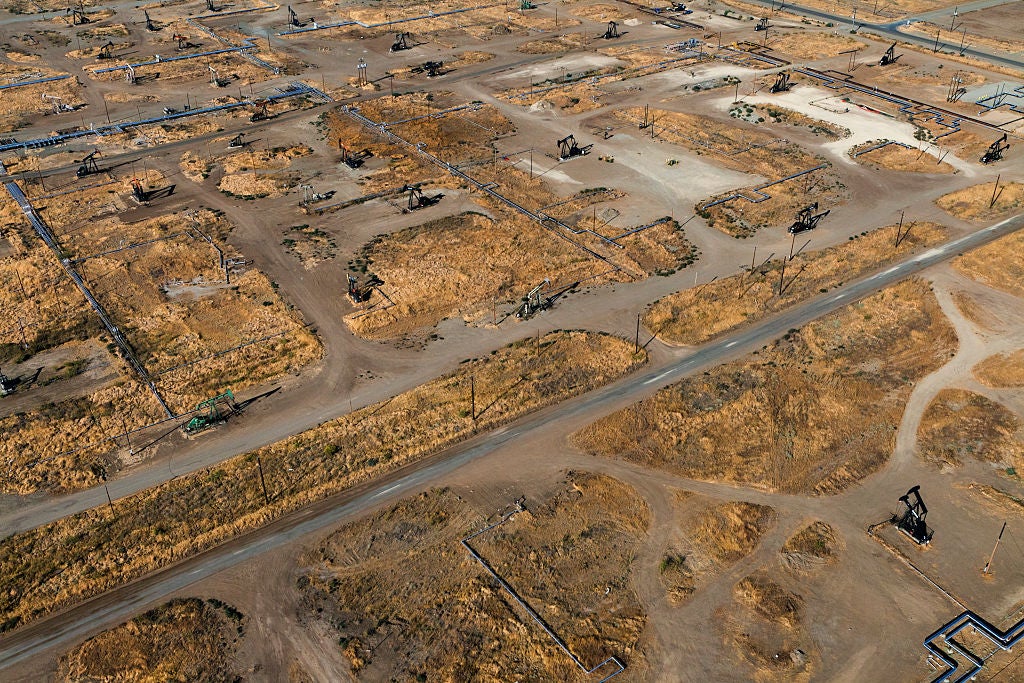
“We need to continue to deliver the oil and gas that the world needs to be able to reliably and affordably have the energy it needs,” said Barbara Harrison, vice-president at Chevron New Energies, at the annual Bloomberg New Energy Finance (BNEF) conference in London in October. “At the same time, we need to be investing in the next generation so that we can be confident that that business will be viable today and tomorrow.”
The energy sector is leading global M&A activity this year, with oil and gas a massive contributor. Chevron’s “focus” on oil and gas was revealed last month when it bought its smaller rival Hess Corp in a $53bn, all-stock deal. Two-and-a-half weeks before, ExxonMobil – Chevron’s larger rival – bought Pioneer Natural Resources for almost $60bn in another all-stock deal.
Hess has a stake in the Stabroek area off the coast of Guyana, home to the biggest global oil discovery of the past decade, and also has major fracking assets in the US shale region of North Dakota. Pioneer, meanwhile, is one of the top producers in the US’ huge Permian shale oil region, and its purchase ranks as Exxon’s biggest deal since the company’s $81bn takeover of Mobil in 1998.
The Chevron and Exxon megadeals helped lift monthly M&A activity in October to $319bn, its highest level in 17 months and one-third more than the value recorded in September, according to the London Stock Exchange Group (LSEG).
Energy and power is now the leading M&A sector so far this year, with deals worth $424bn, of which $261bn is in the oil and gas sector, according to LSEG.
The oil majors have been buoyed by high oil and gas prices since Russia’s invasion of Ukraine, which has led to bumper profits. The recent deals are representative of US majors using those profits to expand their hydrocarbon businesses. “Even at these elevated oil prices, it is more efficient to buy proven reserves than it is to test and develop new reserves,” said Jim Mitchell, head of Americas Oil Research at LSEG, in a press statement.
However, exploration risks are not the only risks faced by oil majors. Under the legally binding Paris Agreement, the world has committed to net-zero greenhouse gas emissions by mid-century. For this target to be met, the International Energy Agency (IEA) has repeatedly warned that the oil and gas sectors must go into managed decline, with no new oil and gas fields approved for development beyond those already in existence in 2021.
This energy transition is beginning to take place, shows the data. “The share of coal, oil and natural gas in global energy supply – stuck for decades around 80% – starts to edge downwards and reaches 73% by 2030,” under current policies, said the IEA in its latest annual World Energy Outlook, published in October. Heat pump sales now outnumber boiler sales in many developed economies, while additions of coal- and natural gas-fired power plants have halved compared with previous peaks, the agency added.
Yet high returns at US oil majors have led to a consolidation of oil and gas assets, rather than increased investments in low-carbon assets. Now, the latter opportunity may be passing as energy markets stabilise. Profits at Chevron in Q3 2023 were $6.5bn compared with $11.2bn in Q3 2022. At ExxonMobil, Q3 2023 profits were $9.1bn compared with $19.7bn in Q3 2022.
In Europe, Shell has also seen its profits decline from $9.5bn in Q3 2022 to $6.2bn in Q3 2023, shows company data. Unlike its US rivals, the company is focusing on share buybacks to boost shareholder returns rather than oil and gas M&A megadeals.
BP saw profits decline from $8.1bn in Q3 2022 to $3.3bn in Q3 2023. Like Chevron and ExxonMobil, it has used Russia’s invasion of Ukraine as an opportunity to boost its oil and gas division. Last year, the company reassessed plans to cut upstream production by 40% and will now target a 25% reduction in output by 2030 instead.
New analysis from the think tank Common Wealth found that BP invested more than 11 times as much in oil and gas as "low carbon" in Q3 2023, according to company data.
“All net-zero pathways demand fossil fuel majors wind down their existing dirty assets and scale up renewables,” said Chris Hayes, a senior analyst at Common Wealth. “But the last two years have locked us into two mutually reinforcing distributive and ecological crises, with oil majors hoovering up cash from the rest of the economy and using it to consolidate their position and hasten climate breakdown.”



